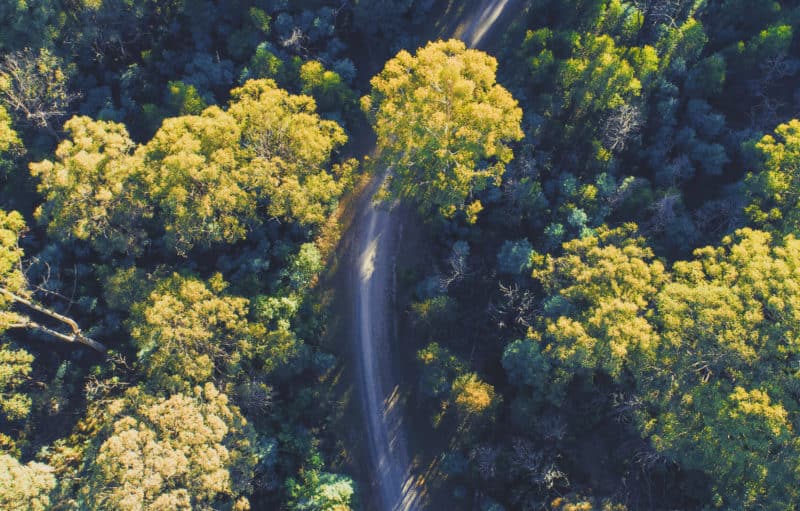NEWS 31 March 2022 |
City dwellers are fascinated and enthralled by coming across wild animals in their urban environment – even if the wild animals are feral.
Feral deer made headlines in 2017 when one got inside a funeral home at Ringwood, causing $100,000 in damage. And while Melburnians were stuck in lockdown in June 2021, another was seen running down the streets of Collingwood and Fitzroy.
These are just signs of a larger state-wide problem.
On 26 March, the Victorian Government released their much anticipated Peri-urban Deer Control Plan 2021-2026 which will guide the management of deer in peri-urban areas around Melbourne. It lays out priority areas for management based on impacts on public safety, agricultural assets, water quality, Indigenous cultural heritage and high-value biodiversity areas.
This is the first of three region-specific plans developed to address the state’s deer control response under the Victorian Deer Control Strategy released in October 2020. The other two regional plans will be developed for the east and west of the state. Read our initial thoughts on the Strategy here.
The Peri-urban Deer Control Plan (the Plan) covers the local government areas of Nillumbik, Yarra Ranges, Cardinia, Knox, Manningham and Whittlesea. It reports few remaining deer-free areas in the peri-urban region.
The Plan does set out a clear matrix the Department of Environment, Land, Water and Planning (DELWP) will use to guide the management of deer and funding of deer removal operations.
However, it may, in the long-term, be better to directly fund land managers, such as Melbourne Water, Parks Victoria and Traditional Owners, to control deer on the land they manage instead of having to apply numerous times to DELWP for funding.
The Plan relies heavily still on community groups and local councils, already at the front of the push to protect areas of conservation and agricultural significance, to design and undertake control works. DELWP should work with these bodies and groups and build on their accomplishments, not tie them up in further hoop-jumping for funding.
However, deer are challenging to control in peri-urban areas. Shooting is likely to be very difficult, if not unviable. In other less populated areas, shooting can be used effectively, including aerial and on-ground shooting for both professional and recreational hunters, or supervised accredited hunters in more protected areas. This is not an excuse for open slather recreational hunting – control measures are most effective when targeted.
The use of tranquiliser guns and subsequent euthanasia of deer is considered safest by organisations such as Melbourne Zoo, but the use of tranquiliser guns is restricted to authorised persons, so will likely not be a common option. Traps are used in other states, but there is limited experience in Victoria and would require permits. Landowners and land managers are mostly stuck with expensive fencing and barrier options.
We need to look at control techniques such as baiting or even biological control to bring the numbers down in a significant and meaningful way, and this will require additional government investment.
Due to the landscape level approach being undertaken by DELWP in the Plan, finer-detail conservation issues have been left out. DELWP assures that these will be considered, but it is concerning that smaller significant areas where threatened species and communities are affected slip through the cracks and possibly miss out on vital funding. Overlooked areas include Cool Temperate Rainforest in the Dandenong Ranges, a Flora and Fauna Guarantee-listed community heavily impacted by deer. (Read more about these impacts in this past Park Watch article from local Meghan Lindsey.)
The increasing impact of deer on Victoria’s biodiversity is a significant finding of the Plan. There are over a million (and growing) deer impacting almost all areas of native vegetation. The focus on regional plans will help specific sites, assets and parks, but leaves the rest of the state open to deer damage. Better than no action, but does not meet the scale and breadth of the problem by reducing deer numbers overall.
Sitting heavily over the Peri-urban Deer Control Plan and the entire Victorian Deer Control Strategy and its goals is that, inexplicably, deer remain listed as a protected game species under the Wildlife Act 1975 and protected on public lands. Deer control on public land needs authorisation under the Act. It is proposed this requirement be removed for public land managers, which may help. But there is still a tangle of bureaucracy to navigate, including 11 other pieces of legislation to control these invasive feral animals.
In 2019, VNPA spearheaded a group letter of leading scientists, farmers and community groups calling on the state government to list deer as a pest species under the Catchment and Land Protection Act 1994. This would align the management of deer on public land with other legislation and state policies, such as the Biodiversity 2037 Strategy. Read that letter here.
The Peri-urban Deer Control Plan again highlights the increasing impact of feral deer in Victoria including peri-urban areas on public safety, agricultural assets, water quality, Indigenous cultural heritage and high-value biodiversity. Victoria needs to be urgently working towards an overall reduction in their numbers across public and private lands. It’s time to get serious about their control. This must start with listing deer as a pest species across all land tenures in Victoria, and managing them like foxes, rabbits and cats as an obligation, not just an option. Help us call on the state government to do so here.
The Plan is a small and very late step in the right direction, but it must be backed up with significant and secure long-term funding by the government to get the booming deer population under control.
More
Read coverage in The Age.
